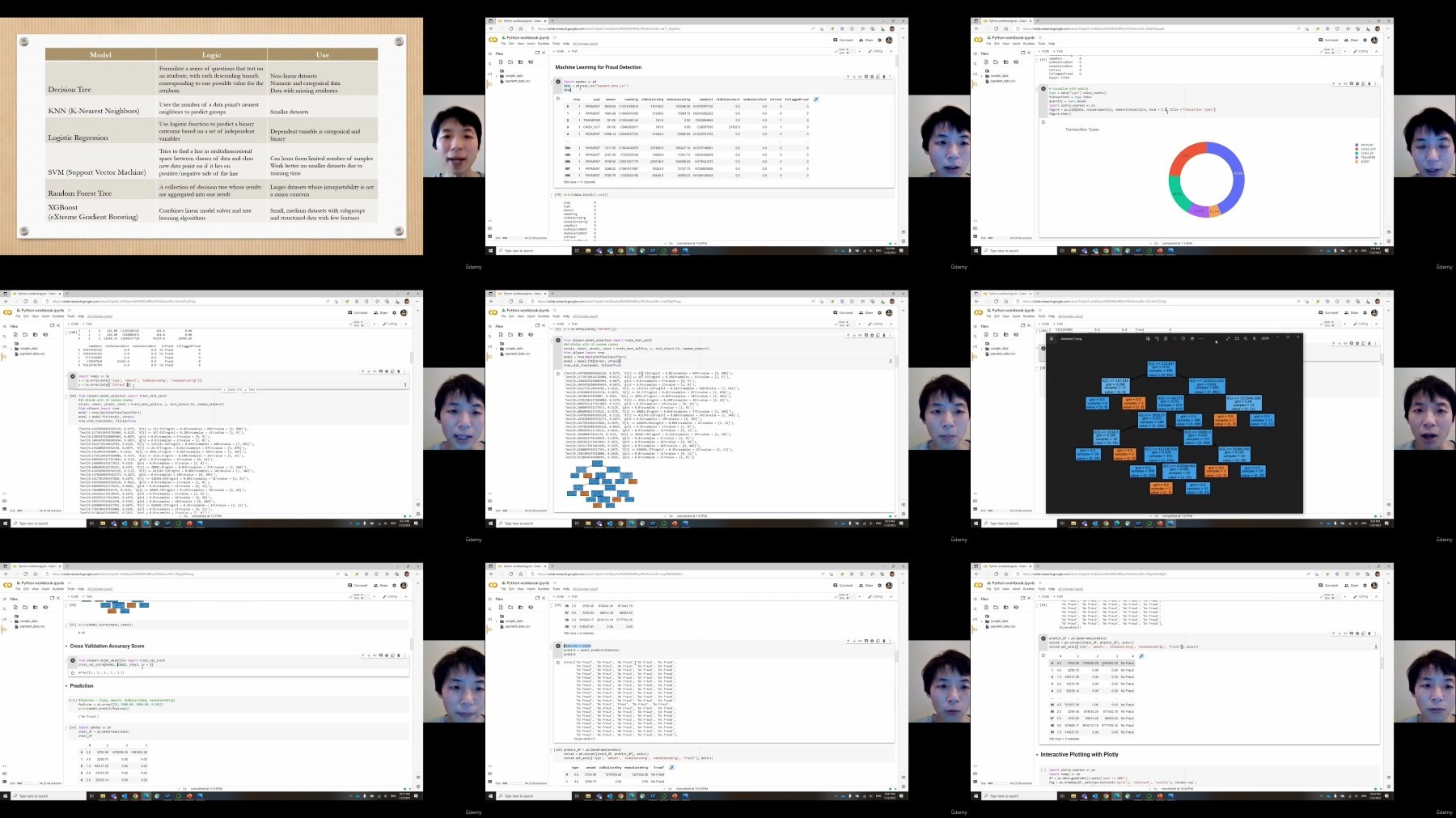Investigative Data Analytics: Python Vs. R

Investigative Data Analytics: Python Vs. R
Published 3/2024
MP4 | Video: h264, 1920x1080 | Audio: AAC, 44.1 KHz
Language: English
| Size: 1.11 GB[/center]
| Duration: 2h 35m
Comparatively learn investigative data analytics in Python and R
What you'll learn
Use Pivot Table in Python and R to manipulate data
Use Benford's Law to detect anomalies in Python and R
Use Heatmap in Python and R to identify correlations between data columns
Cluster datasets into subgroups using Kmeans in Python and R
Use Image to Text to extract text data from images using Python and R
Use Histogram and Word Cloud in Python and R to analyze text data
Use machine learning decision trees to identify fraudulent data points in Python
Use Plotly in Python to show interactive data structures
Requirements
No programming experience needed. All you need to do is follow along.
Description
This immersive course delves into Python and R for investigative data analytics, spotlighting techniques such as heatmap generation, clustering algorithms, decision tree analysis, and text analytics. By comparing Python's seaborn and matplotlib with R's ggplot2, students will learn to craft detailed heatmaps and unveiling intricate data patterns. Clustering sessions will demonstrate segmenting techniques using Python's scikit-learn and R's cluster packages, applying K-means to dissect data into significant clusters for insightful analysis in areas such as market research and customer segmentation.In the decision tree segment, the course contrasts Python's scikit-learn with R's party package, teaching how to build models that illuminate the path from data to decisions. The exploration extends into text analytics, employing Python's plotly express for dynamic visualizations and both languages' capabilities to create expressive word clouds, enabling students to mine and interpret textual data for trend spotting.Tailored for both budding and seasoned data analysts and researchers, this course interweaves theoretical concepts with substantial hands-on practice. Learners will emerge with a profound understanding of which programming language, Python or R, best fits various data analytics challenges. By fostering a practical learning environment, the course underscores real-world applications, ensuring participants gain the proficiency needed to navigate the complexities of data analytics confidently. This dynamic curriculum is poised to enhance analytical skills, preparing learners for the demands of data-driven decision-making in their professional and academic careers.
Overview
Section 1: Introduction
Lecture 1 Introduction
Section 2: Pivot Table
Lecture 2 Python
Lecture 3 R Code
Section 3: Benford's Law
Lecture 4 Python
Lecture 5 R Code
Section 4: Heatmap
Lecture 6 Python
Lecture 7 R Code
Section 5: Clustering
Lecture 8 Python
Lecture 9 R Code
Section 6: Image to Text
Lecture 10 Python
Lecture 11 R Code
Section 7: Text Analysis
Lecture 12 Python
Lecture 13 R Code
Section 8: Machine Learning
Lecture 14 Python
Lecture 15 R Code
Section 9: Additional Learning: Python Plotly
Lecture 16 Plotting with Plotly in Python
Data analysts who want to develop investigation specific skills.




Investigative Data Analytics Python vs R
